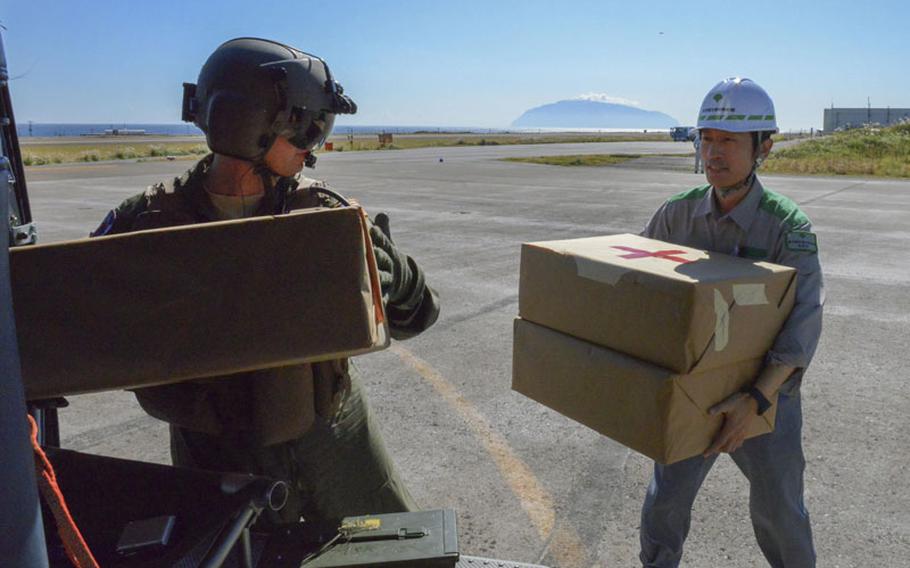Community News
Yokota participates in Tokyo disaster relief exercise
374th Airlift Wing PAO November 3, 2015

()
YOKOTA AIR BASE, Japan -- Aircrew with the 459th Airlift Squadron participated in a Tokyo Metropolitan Government disaster relief exercise Oct. 28, 2015, loading simulated medical supplies onto a UH-1N Huey and delivering them to an airport on Miakejima Island.
The simulated medical supplies represented a number of aid and relief items that the 459th AS can transport to areas throughout the region during emergencies.
"The purpose of the exercise is to display the ability for multiple bilateral agencies to come to the aid of the TMG in the instance of an earthquake, volcanic eruption, tsunami or any event that would require assistance from air, land or sea," said Staff Sgt. Christopher Rector, 459th Airlift Squadron special missions aviator and exercise participant.
In knowing the serious nature of disasters in the region, Yokota personnel participate in TMG disaster exercises twice a year, preparing the TMG to deliver the best response in the worst scenarios.
"The TMG wants to put their people at ease and help them understand that not only are they here to support them, but so are we," Rector said. "All these exercises show them that we're ready for anything at any time."
According to Capt. Brandon Jones, 459th Airlift Squadron chief of standardization and evaluation, Yokota employed the UH-1N for this exercise because of its unique capabilities.
Miyakajima Island has a small runway which cannot support a cargo aircraft like the C-130 Hercules. Even if a suitable airstrip was available, a catastrophic event could render the runway useless to an airplane. A helicopter, however, can land in a very small space.
According to Jones, the exercise also helps Yokota gain an understanding of how the TMG operates and it keeps everyone on the same page with all shared procedures.
The training went smoothly, the aircrew said. The Miyakejima Island airport received the simulated supplies without a hitch, demonstrating cooperation between two nations.
According to Rector, Japan has been struck by many catastrophic events. In March 2011, the country was struck with an earthquake and tsunami turned nuclear disaster that required assistance from the international community. The U.S. Air Force played a large role in that support, along with the 459th AS and Yokota community.
"We were able to mobilize all four of our aircraft within 24 hours," Rector said.
Operations lasting 24 hours a day, 7 days a week, allowed the 459th AS to respond quickly. Those Airmen were the first Americans to set foot in Sindai after the earthquake, transporting U.S. Embassy search parties and locating U.S. personnel. They also flew in supplies and equipment to rebuild Sindai Airport.
Rector said this is just one example of how the TMG exercises prepare US-Japan response teams for when an emergency does take place. He also said the strong relationship between Yokota, the 459thAS and the Japanese government allows continued bilateral training so if a disaster does strike, it will not strike the unprepared.